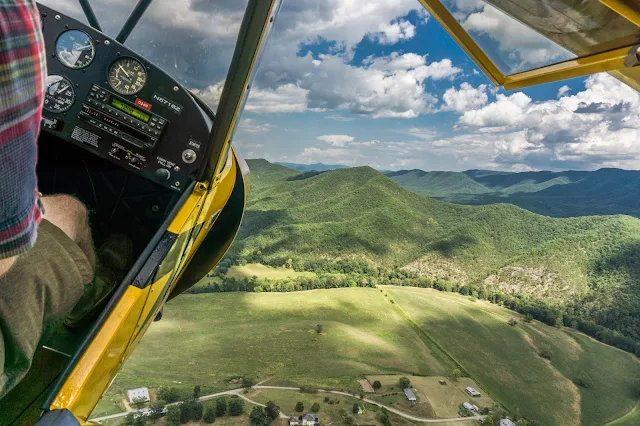Vinata Aeromonality |Flying Car In India
 |
| Flying Car 2021 |
The idea is that in the future world we will travel in personal planes. In the future, the skylines of cities will be occupied with these flying cars. Even conventional car giants such as South Korean carmaker Hyundai have unveiled similar concepts of flying cars that can be used for city traffic.
There are several companies working on flying cars, and it looks like the Indian companies among them are working on the Aviate vehicle that is racing to launch the world's first flying car.
Vinata unveiled the vehicle at one of the most prestigious exhibitions, Helitech Expo 2021 (Excel). Vinata Aeromonility, a start-up in Chennai, Tamil Nadu, has presented its autonomous flying hybrid car on the global stage. At the show, the company unveiled its first flying car in London.
In a recent tweet, the civil aviation minister Jyotiraditya Scindia announced that he had presented the young team at Chennai-based start-up Vinata Aeromobility with a concept model of Asia's first hybrid flying car. As reported by Asian News International (ANI), the Minister was delighted to present. Vinata AeroMobility's flying car concept that was presented to him by India's Minister of Civil Aviation - Aviation - as. Vinata and the flying car concept were not mentioned, but it was described as a hybrid and autonomous flying car. The minister confirmed in his tweet on Monday that he had met with Vinata's team and presented the concept model.
The car weighing about 1100 kg is powered by electric battery and manufactured in India as a hybrid electric VTOL aircraft (vertical take-off and landing aircraft ). According to the company, the car is designed for dual travel and can touch down at cruising speeds of 100 to 120 kilometres per hour. Vinata Aeromobility is an electric hybrid car. It has a flight time of up to 60 minutes with a top speed of 120 km / h and a range of up to 100 kilometres without refuelling.
It can be operated simultaneously by two people and it has a top speed of 100-120 km / h at a maximum altitude of 3,000 feet for the 60-minute journey. The autonomous flying vehicle has a take-off weight of 1300 kilograms and weighs 1100 kilograms. The flying vehicle weighs a total of 1100 kilograms and can handle a take-off weight of 1300 kilograms.
According to Yogesh Ramanathan, the founder and CEO of Vinata Aeromobility, the company hopes to conduct flight tests on its hybrid electric aircraft by 2023 and to make them available for commercial flights by 2025. Yogesh says her vehicle will be able to travel a short distance on wheels without using its battery. He also says it will be able to drive short distances without using a bike's battery.
At the Helitech show in London, Chennai-based Vinata Aeromobility revealed a prototype of a two-seater flying car, the Autonomous Hybrid Air Cargo (UAM) for urban air mobility with a payload of 200 kg. "Our design combines vertical take-off and landing (VTOL), low-emission electric fuels and hybrid propulsion technology with state-of-the-art automotive technology to create a unique vehicle that we believe will revolutionize urban air mobility and the third dimension of transportation. Vinata says that his hybrid electric aircraft is designed for a payload of 250 kg with a top speed of 120 km/h and a range of 60 minutes, powered by a biofuel battery.
The proposed vehicle will be made of lightweight, high-strength carbon fibre composite material and will be fully autonomous and offer the opportunity to pilot on board. Flying automakers claim to be changing the reality of autonomous hybrid electric vehicles (VTOL) with room for up to two passengers. A hybrid vertical lift-off and landing vehicle (VTOL) powered by a quad-rotor coaxial system powered by eight BLDC engines with the same number of fixed propellers.
In terms of flight safety, the hybrid flying car has the distributed electric propeller (DEP) which means that if one of the vehicle's rotors fails, the other worker engines and propellers bring the vehicle to a safe landing. If one or more propeller engines fail, the remaining propellers and engines are in good condition to land the flying car safely. Vinita Aeromobility relies on a safe vehicle and claims that in the event of a failure of a rotor in the vehicle, other functioning engines would land the vehicle safely and without injury.
In case of a power failure of the generator, emergency power can supply the motors with power. In the event of a controlled interruption of the generator, the emergency power supply also generates electricity for the motors. It can also supply power to motors if the generator or biofuel fails.
According to HE, the vehicle uses Distributed Electric Propulsion (DEP), which uses multiple propellers and engines in the event of a failure as a backup. In hybrid electric vehicles, an IC motor can be powered by petrol, diesel or electric motors and is capable of supplying the vehicle with electricity. According to IHM, the car has a decentralised electric drive (DEP) in the event of a breakdown.
Chennai-based start-up Vinata Aeromobility will reportedly unveil Asia's first hybrid flying car at the world's largest Helitech show, Excel, in London on October 5. The hybrid car weighs around 1100 kg and can handle a maximum load of 1300 kg.
The Chennai-based start-up is set to unveil its first hybrid flying car to the world on 5 October in one of the most popular aviation events of the world - EXCEL London under the name Vinata Aeromobility. Vinata, a hybrid air freight aircraft, will be unveiled at ExCel London, the world's largest Helitech exhibition, on 5 October.
